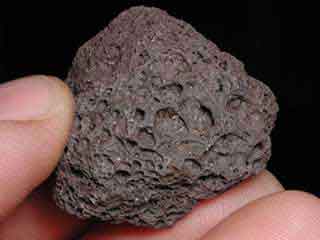



By asking questions about our experiment we can begin to learn something about these problems. One of the problems that scientific experiments like this have is what is referred to as a scale problem our experiment is much smaller, slower and colder than real meteorite impacts. However, the immediate and perhaps more spectacular effects are the large ripples, or tsunamis that spread out rapidly from the impact centre. In a real impact, this could result in huge volumes of water vapour in the atmosphere. The meteorite (our pebble) impact in the pool sends a fair bit of water high into the air. Land-based impacts can also generate lots of heat, but this is a bit more difficult to simulate here. Note that the crater will also have a high rim made up of material thrown out during the impact. Flour is also thrown into the air in the case of a large meteorite impact the dust will reach many kilometres into the upper atmosphere and have a major influence on global climate (it will tend to block sunlight). In the case of the flour, the red pepper (as long as your aim was good) will spread out and give you an indication of how far the ejecta has been moved from its original spot. In the real world, earth materials (rocks, soils, trees, water) are ejected (thrown up and out) on impact. The slow motion allows you to see what happens to the water and flour on impact.įour short video clips show the results of 3 experiments in the flour box, and 1 in the pool.
Real meteorite movie#
You can then edit the video, add a title and captions in Windows Movie Maker or if you have it, something a bit more sophisticated.
Real meteorite free#
There are several free Slow Motion Apps available that you can use to record the impact. I recorded the impact in water (a swimming pool) and in the flour box on my Tablet. When you’re finished with the flour you can spread it on the compost, or if you have kept your experiment very clean, make some spicy cookies with it. Try to hit this red spot with the pebble, dropped from about 2m height (use a tall person to help you, or a chair or step-ladder).
1.jpg)
The red helps to delineate the shape of the ejected flour. I created a small circular area of red pepper in the middle of the box.
Real meteorite how to#
This post shows you how to make your own meteorite crater – it’s pretty easy. Click on the image to make it larger Make your own meteorite crater – comparing experiment with the real world


 0 kommentar(er)
0 kommentar(er)
